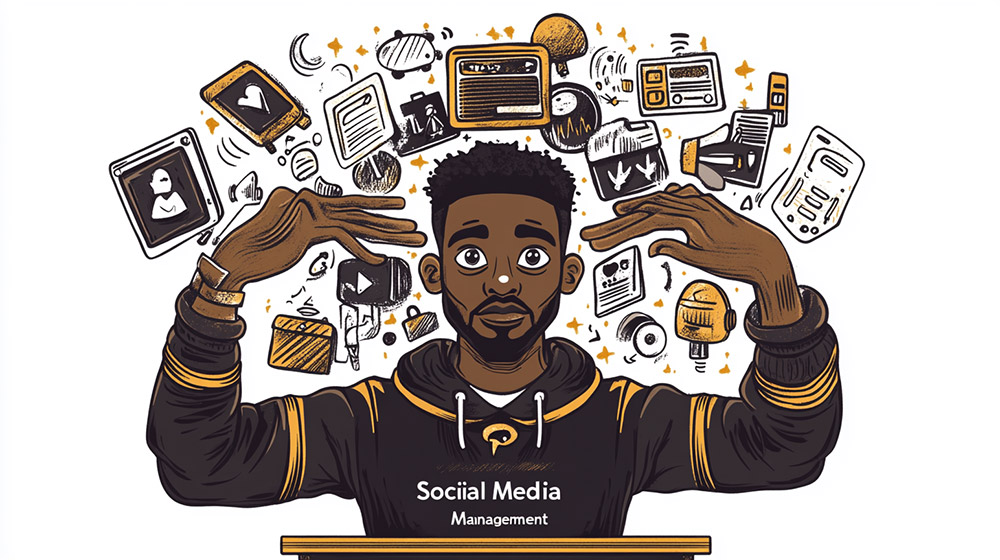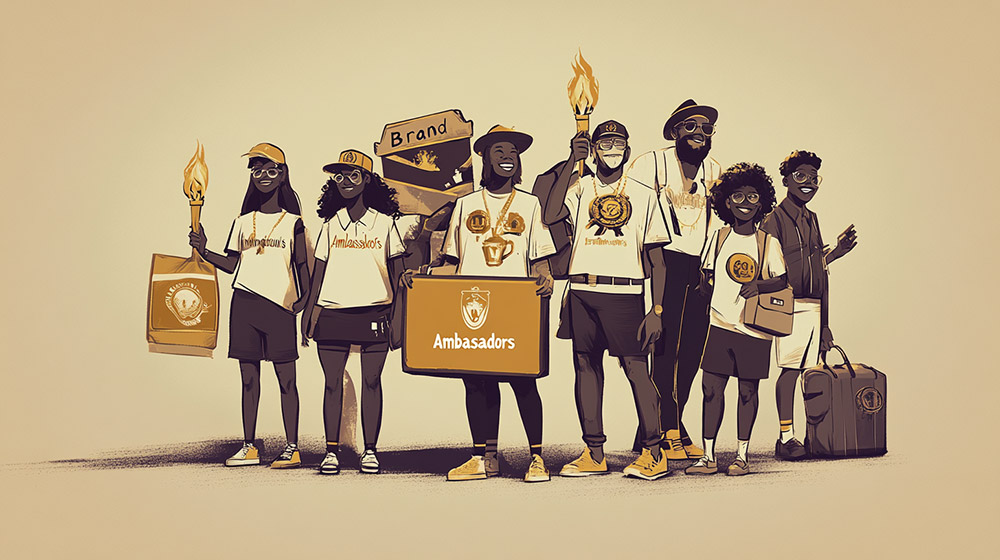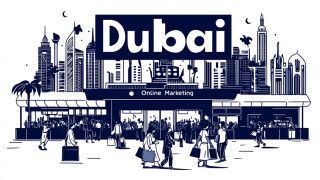Well-developed products are not suitable for sales in a saturated market. The style of brand management alters the balance between obscurity and standing out with excellent products. Brand management talks much more than just logos and taglines-it is creating an experience that allows customers to connect, trust, and attach meaning to such experiences. With 59% of consumers preferring to buy from brands they trust and 71% wanting brands that are aligned with their values, this only goes to show how consumers associate brands with trust.
This article breaks down what brand management really means, how to put it into practice, and gives more insight into the steps to take and case studies that exemplify success in brand management online and offline. These actionable steps will guide you if you are a startup or strengthening an already established brand into building a brand that resonates with clients and drives sales.
Brand Strategy Development
Before tactics come into play, you ought to start with a concrete brand strategy. This will orient all your brand decisions and ensure that all the pieces fit together in creating the brand image you want to project.
Performing a Brand Audit

In brand management, the first step toward success is to assess your current position-from there, every step to recovery will be aided. A brand audit enables you to see your brand through your customers’ eyes and identify what needs improvement.
The LEGO Group can provide a strong real-life lesson on why brand audits are necessary. By 2003, LEGO was close to bankruptcy after several years of moving far afield from its one key product. A company-wide brand audit showed that they had diluted the brand by moving farther away from what signified the company’s special-creative building toys. This allowed LEGO to reassert its brand identity and return to profitability.
For your brand audit, start out by collecting a variety of information regarding customer perception of your brand. Use social listening software to study online discussions, customer surveys, and review analysis. Find out what the sentiment is on your products, service, and overall experience.
Next, position the company against competitors. From this, make a simple positioning map that has two axes representing two characteristics that are relevant in your industry (e.g., price- quality or traditional-innovative). Assess your brand and competitors on the map so as to gain a visual appreciation of where you stand and where possible holes in the market could be exploited.
Defining Brand Identity Elements

Your brand identity is, in fact, the collection of factors making your brand identifiable and revealing the personality of that brand among others. These could be the visual elements as well as deeper features such as values and voice.
At the centre of your brand identity is purpose – the reason your brand really exists beyond just making money. To witness a true example of this kind of meaningful branding, there is Patagonia. Their environmental mission indeed shapes every aspect around product design, marketing campaigns, or their “Don’t Buy This Jacket” ad that encouraged consumers to think about the environmental impact of their purchases.
- Define your brand purpose, vision, mission, and values.
- Create the visual identity system (logo, colours, typography, imagery).
- Devise guidelines for the brand voice and tone.
- Devise guidelines for the brand voice and tone.
Brand purpose should connect with the human need or a significant problem that is being solved. The vision is a description of what your organization wants to achieve. Your mission is the “how” for achieving that vision. Values refer to the principles that guide your actions.
For your visual system, opt for features that best represent the personality of your brand and will work across all mediums. Document everything in brand guidelines so that everyone in the organization knows how to show the brand in a consistent manner.
Formulating Brand Positioning

Brand Positioning means, how would you want customers to perceive your brand, for example, as opposed to the competition, a strong positioning would show what exactly makes your brand different and why that difference is worthwhile for the customers.
Dollar shave club effectively disrupted the razor industry through its clear positioning tagline which aptly summarizes this: “Shave time. Shave money.” With that simplistic statement, they positioned themselves against giants like Gillette through emphasizing the low cost and convenience of the product. Their viral launch video also brilliantly and succinctly aligned this position under humorous and straightforward messaging about their point of difference.
To draft your position statement, use the following template: “For [target audience], [your brand] is the [category] that [key benefit] because [reason to believe].” In this way, you will clear things up about who you are serving, what category you are in, what internet benefit you provide, and why the customers should buy this claim.
Look for white space in the market that includes the gaps left by unsatisfied customer needs or shortcomings in competitiveness. This will give you precious opportunities that you can use to position your brand differently and create value.
Brand Management Implementation: Digital Tactics
A fully developed brand strategy must pave the way for a supporting structure and maintenance in virtual spaces. Here is how to translate your brand strategy into effective online tactics.
Brand-Building Content Strategy

Advanced content, at the moment, has transformed into one of the most potent mediums for constructing one’s brand identity, as well as for connecting with audiences. In these lights, strategic content can provide for your consistent assurance in communicating the value of and position of your brand.
Red Bull provides a case in point for the efficacy of content in brand establishment. Instead of concentrating on the energy drink itself, they built a media empire around extreme sports and adventure. Their content strategy reinforces such brand positioning as energetic and daring without constantly being about the drink itself.
To construct your own content strategy, first identify 3-5 content pillars, which are key themes relevant to your brand positioning and that can excite your audience. Then create different type content for each pillar, energizing and giving value to your audience while reinforcing your brand message.
Develop a content calendar to ensure the flow of brand-building content is consistent. Build your calendar around a regular brand-awareness and consideration-growing program, interrupted occasionally by promotional material to stimulate conversion. The content for the brand-building stage should not be focused on driving immediate sales but rather on building relationships for the long haul.
Brand Management through Social Media

Therefore, social media is endowed with some very exceptional relationship-building opportunities; if all else fails, it is worth checking whether they care to see compensations in terms of how the brand will be held and displayed on various social channels.
In fact, Glossier built their entire cosmetics brand through Instagram, creating a very different set of visual presentations—with minimal packaging, diverse models, and user-generated content. The customer turned into a brand ambassador for Glossier, who presumably would share their own experience with the brand, and the brand’s reach extended organically through such peer channel shares.
Thus speaking of effective social media brand management:
Design guidelines on every particular platform as a channel of adaptation into your brand identity to each social channel while continuing to keep the coherence.
Prepare crisis control procedures that direct your action when things go south. Wendy’s sharp example of deft sassy Twitter personality-net wit and sarcasm, knowing precisely what the line is.
Adopt social listening tools and watch brand sentiment and mentions around the brand. This provides an early warning on potential issues and possible perceptions of your brand in the general public.
Search Engine Optimization for Brand Authority
SEO is more than just generating traffic; it builds authority for a brand and controls its presence in SERPs.
Learn usage of SEO Hubspot for brand authority building. Creating deep, relevant content on inbound marketing topics makes them the expert resource to go to in the space. They make HubSpot appear very frequently when searching on marketing advice, strengthening brand position.
To build brand authority through SEO:
Control and optimize your brand SERP (Search Engine Results Page)—what someone will see when they look for your brand name. Claim as many relevant profiles and listings as possible to control as much of this page.
Create topical authority in your niche by writing thorough, highly original content around your specialty.
Increase visibility and more importantly perceived authority by optimizing for featured snippets and other SERP features.
Email Marketing For Brand-Nurturing

Email really connects to an audience apart from nurture. For that reason, there will be a good environment to control growth in the brand relationship over time.
The email program at Airbnb is an example of effective nurturing of the brand. Lifecycle emails can be planned for each customer, all the while continuing to reinforce belonging anywhere. From dreams of travel inspired by welcome emails to reviews and future bookings encouraged by post-stay emails, there is much to each such email in their different facets. Thereby contributing to the understanding of the brand experience.
To use email for your brand:
Segment audiences based on how close they are to your brand: for instance, new to your brand, regularly loyal customers.
Develop email sequences to gradually introduce new subscribers to your brand story and values.
Consistent identity through visuals and voice across all emails, differing according to each segment’s needs.
Digital Advertising for Brand Awareness
Digital advertisements are mostly for direct response but are also important in building perception and awareness as a brand.
Spotify gives an example of an annual “Wrapped” campaign that shows how advertising can truly strengthen the brand’s position. Personalizing people by using their data and compiling it into a year-in-review story or report makes it shareable content that spreads organically. So, massive exposure, while hailing Spotify as data-driven and personal.
For brand-building advertising: Make sure your ads reflect your visual identity and voice consistently.
Remember to consider brand safety when placing programmatic ads to avoid any associations that would be bad for your brand.
Balance brand-building and direct response in your advertising strategy.
Brand Management Implementations: Offline Strategies
While the shift to digital is palpable, offline brand experiences are indispensable. The intense potential that physical touch points have to create sincere emotional bonds and unforgettable brand memories are very important to us.
Retail and Branding in Physical Spaces

Physical spaces experience a rare opportunity of bringing brands to life through multi-sensory experiences.
Apple Stores set the quality standard for translating brand identity into physical existence. The stores emphasize simplicity, with an open interior space and tactile interaction with products, echoing the simplicity and innovativeness that define Apple’s products. Even the angle at which the laptop screens are placed is an example of attention to cohesive brand experience.
In order to effectively translate your brand into physical spaces:
– Design principles that translate your brand positioning and personality should be developed.
– Develop merchandising standards so that the presentation does not vary.
– Build a distinct ambiance with regards to all senses, visual, audio, olfactory, tactile, and even temperature.
– Train personnel to reflect the brand values in their customer interactions.
Packaging and Product Design

Packaging represents the first hands-on encounter most people will have with your brand, making one of the essential tools for brand management.
Take, for example, the famous blue box of Tiffany and Co. Distinctive packaging is worth its weight in gold. The robin-egg-blue box has built associations with luxury and special moments, thus conferring value above the jewelry itself. Its color, once seen, sends instant recognition of the brand across the globe.
To improve your company’s packaging and product design:
– Create a unique visual language easily recognized on shelves or during unboxing.
– Packaging must reflect the brand positioning-a premium brand must have premium packaging.
– Sustainable materials should be considered for the packaging, especially if the brand is grounded in environmental values.
– Design packaging that promotes social sharing, thereby increasing reach.
Event Marketing and Experiential Branding
An event and experience are still the best ways to create memorable connections to your brand, which is often unattainable through digital interactions.
With Refinery29’s 29Rooms event, experiential marketing injected life into the brand. The immersive art installation was yet another extension of the media company’s vision focused on culture, style, and female empowerment while creating highly shareable moments for the attendees. The physical experience extended the digital brand into the real world.
To facilitate effective brand experiences:
– Every brand activation should be framed to ensure each occasion mirrors the core identity.
– Design experiences that encourage social sharing to extend their reach.
– Measure brand impact not only through attendance but other metrics like awareness, perception, and affinity.
Employee Brand Ambassador Programs

Employees hold the brand on the ground since they touch every point of interaction. With the employees in their hands, the management of the brand is considered to be consistent. Southwest Airlines is an example of how the culture can become a brand differentiator. With fun and friendly service, that aspect of the culture is woven into their hiring, training, and recognition programs to maintain an aspect of coherence and consistency in the brand delivery. Employees do not just deliver the promise; they live it.
When converting employees into brand ambassadors:
Internal brand training should be developed so employees can fully understand your positioning and values.
Create a guideline for how employees should represent the brand during customer interactions and on social media.
Recognition and rewards should be given to those who embody your brand values.
Regular surveys should be held to measure an employee’s understanding and alignment with your brand.
Traditional Media Management
For some brands, traditional media continues to matter, even though everything has gone digital. Certain demographic targeting or building broad awareness.
When it comes to the management of the brand across traditional media, Nike carries an amazing consistency throughout all channels-from digital to TV and outdoor advertising. Their unmistakable visual language with inspiring messaging is something that you can identify with-a Nike advertisement or billboards-whether you are passing in front of it or watching it on TV.
When conducting traditional media brand management:
Make clear guidelines for how your brand appears in each media.
Create templates and examples for agencies and partners to follow for consistency.
Every traditional media footprint should be regularly audited to ensure alignment with the brand strategy.
Brand Measurement and Management Tools

The important aspect of an effective brand management process lies in tracking actual progress and making data-based adjustments to improve systems. This article focuses on measuring the performance of a brand and how brands can use tools to maintain consistency.
Brand Health Metrics
To effectively manage the brand, it is vital to know how it performs over time and with respect to competitors. Most top global brands, for example, use the methodology propounded by the Interbrand brand equity model to manage brand equity in such a way that it captures the financial performance of the brand, the role of a brand in the purchase decisions, and the strength of the brand which includes clarity, commitment, and responsiveness.
To measure your brand health:
Track brand awareness through surveys or social listening tools.
Understand about brand perception by asking customers to relate any attributes to your brand.
Monitor brand consideration and preference in your category.
Track brand equity through metrics such as price premium, customer loyalty, and recommendation rates.
Brand Management Software Solutions
As organizations grow, managing a brand over time becomes more and more tricky. Software tools help scale brand management activity for organizations.
The Coca-Cola brand’s global management is through an electronic brand center that gives employees and partners access to guidelines and assets and templates. This is necessary in order to ensure consistency across all countries and campaigns while allowing, if the need arises, local adaptation.
Digital Asset Management systems for organizing and distributing approved brand assets.
Brand Guidelines platforms that make your standards accessible and searchable.
Project management tools with approval workflows for brand materials.
Brand Crisis Management
Even the strongest brands undergo change. Your action to respond to any given crisis can harm your brand or showcase its values in real-time.

Setting up a Brand Crisis Protocol
Preparedness for future irregularities can allow speedy response mechanisms, ensuring that little glitches do not harm your brand reputation.
Johnson & Johnson’s actions during the 1982 poisoning of Tylenol have set the bar for the industry in crisis management. They displayed an extraordinary commitment to customer safety over profits when they took the stand to recall every product from the shelves nationwide, irrespective of costs. This response even ended up benefiting the company in the long run.
To prepare for prospective crises:
Identify possible scenarios that would hurt your brand reputation.
Design a strategic response framework of different crisis types.
Document precise roles and responsibilities during crises.
Draft communication templates that can be adapted quickly.
Simulate responses and search for gaps in your plan.
Brand Reputation Recovery
If your brand gets damaged, a strategic recovery becomes necessary.
As evident, Samsung recovered from the Galaxy Note 7 battery debacle, demonstrating how brands can earn back people’s trust after a crisis. Immediately afterward, they are seen to have laid out an overt eight-point checklist for battery safety and widely communicated their new quality assurance measures. This transparency helped to reestablish consumer confidence when they launched subsequent products.
For brand reputation recovery:
Admit it. Be open and accountable whenever possible.
Communicate the real, practical steps being taken to address the concern.
Focus on trust-building through action, not just words.
Focus on monitoring brand metrics to track the recovery.
Brand Evolution and Refreshes
Brands must evolve to stay relevant as markets, technologies, and customer expectations change. Managing this evolution while maintaining brand equity requires careful planning.

When To Update Your Brand and How
A brand refresh will keep your brand in the present without losing recognition or loyalty.
Mailchimp’s 2018 rebranding shows how to evolve but stay recognizably Mailchimp. They updated the logo, typography, and color palette but kept their signature chimp mascot. They expanded their visual vocabulary to include playful illustrations that communicated their expanded offerings beyond email marketing.
Signs that indicate your brand may need a refresh include:
Your communications are dated to your competitors.
Your brand no longer adequately represents your offerings.
You’re venturing into new arenas where your current brand doesn’t resonate.
Your brand has collected inconsistencies throughout the years.
When updating your brand:
Determine which equity elements must stay intact.
Evolve in small steps instead of a drastic overhaul.
Communicate to both customers and employees about the change and why it occurred.
Finally, transition carefully with a rollout plan that consists of solid details.
Strategies for Brand Extensions
This would drive the potential for growth through extension for new products or services, however, mind it very carefully under supervision in order not to dilute.
Virgin Group is said to have had some success and failures in terms of brand extensions. Virgin entered the global markets of airlines, telecommunications, and financial services using its brand values of innovative and customer-centered experience, yet had jarred applications of this concept with bridal wear and cosmetics as extensions because they detracted too much from the core competencies of the brand.
The following are criteria for evaluating potential extensions of a brand:
Check for how much the new offer will fit into the brand positioning and values.
Do you think your brand has credibility concerning the new category?
Would the brand extension strengthen or dilute the core brand associations?
Do in-depth customer research before full-scale launch.
Future Trends in Brand Management
Brand management is constantly evolving with technology and consumers changing, and thus, the new trends that might emerge are:
– A greater emphasis on brand purpose and social impact, given that consumers align purchasing decisions to values more than ever before.
– More hyper-personalized brand experiences driven by data and AI so that brands can maintain a level of consistence while adjusting to each person’s preferences.
– The lens on employee experience is becoming ever stronger, as the connection between internal culture and external brand has become sharper.
– New challenges in managing brand presence through new-age channels such as voice assistants or in augmented and virtual environments.
Getting Started with Brand Management
Effectively establishing brand management is not done in a day. It starts from here:
- Document the present branding strategy, including the positioning and branding elements.
- Audit brand touchpoints for consistency or gaps.
- Establish or correct the brand guidelines that tell how to represent the brand to everyone.
- Manage approval of new materials and brand assets.
- Make measures to effectuate brand health over time.
By systematically managing the brand, you’ll create a much stronger and cohesive brand experience that would attract customers and foster economic success. Understand that brand building is a long-term investment; thus, persistence and patience will yield results.








